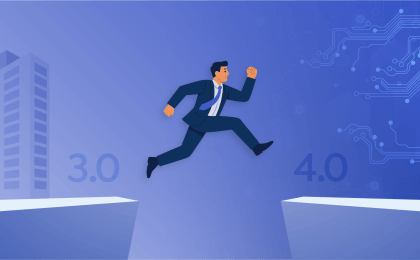The hiring process is exactly that – a process. It contains certain steps that take you from the initial sourcing stage all the way up to the moment an employee is officially hired. And just as with any process, the order of the steps matter.
Take the interview stage, for example. You wouldn’t hold interviews before reading resumes partly because you wouldn’t have had an opportunity to screen any of the candidates ahead of time, and partly because interviews are one of the most time-consuming stages of the hiring process. It makes sense to place some filters ahead of the interviewing stage before committing to spending an hour or more with each candidate.
We can visualize the hiring process through the hiring funnel, a concept with which we’re all familiar. Employers start with a large group of applicants at the top of the hiring funnel and slowly whittle that number down to the top candidates by going through each step.

Each stage serves as a filter for the next stage, which is why we get that classic funnel shape. So it makes sense to put certain filters later in the hiring process, especially the stages that are extremely time-consuming or require a lot of commitment from both the candidate and the employer. Obviously, you wouldn’t put the interview stage first, since it’s so time-consuming, but you also wouldn’t put a background screening stage first either, since each background screen usually comes with a fee, and some candidates might find a background check invasive so early in the process.
Some stages of the hiring process, however are quite useful when placed earlier in the funnel. Resumes are obviously an integral part of that first touch with an applicant because they give you an early glimpse into each applicant’s past experience. But in addition to resumes, it’s useful to include stages that most efficiently and effectively assess candidate potential as early as possible. Pre-employment assessments, for instance, are a really powerful stage to add to the beginning of your hiring process. These can include cognitive aptitude tests, personality tests, or skills tests. Tests provide objective, data-driven insight into your candidates early on, beyond what a resume can tell you.
Putting tests up front in your hiring process benefits your early decision-making in two ways. First, the test scores give you a really effective way to filter for the applicants who are most likely excel in that particular role, essentially acting as a prioritization tool to help you decide which candidates you want to focus on as you move down that funnel.
Second, the results also provide you with a new lens to see the potential in your candidates by highlighting certain applicants who may not have caught your eye based on their resumes alone. Because pre-employment tests are typically highly predictive of job performance (significantly more than resumes or unstructured interviews), a candidate with outstanding test scores deserves a second look, even if their experience or skill set isn’t the perfect fit. After all, qualities like cognitive aptitude predict a person’s ability to learn quickly and think critically, so these candidates are more likely to pick up on training in no time.
Ultimately every company’s hiring process is different, and that process may even differ between departments or between different types of roles. The first step is to decide which stages you want to include in your hiring process, like resumes, interviews, reference checks, pre-employment tests, background checks, and many more that might be right for your hiring goals. The second, sometimes overlooked step, is to identify the order of those stages so that each stage is providing the most value at the right point in your hiring process, enabling you to make smarter hiring decisions more efficiently.





